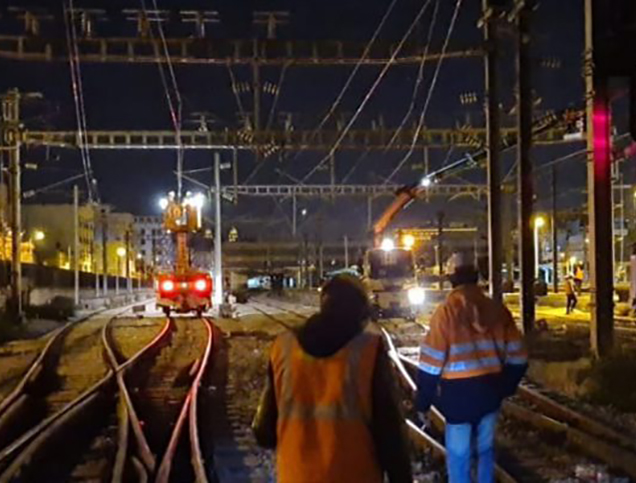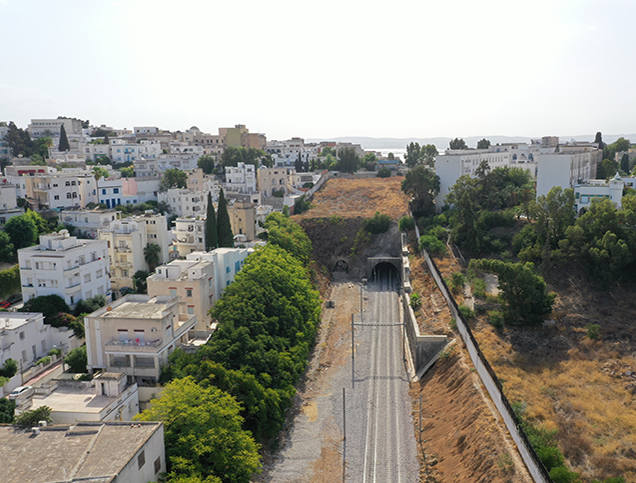
Close
responsive-lightbox domain was triggered too early. This is usually an indicator for some code in the plugin or theme running too early. Translations should be loaded at the init action or later. Please see Debugging in WordPress for more information. (This message was added in version 6.7.0.) in /home/kiju52ce/public_html/development/wp-includes/functions.php on line 6114updraftplus domain was triggered too early. This is usually an indicator for some code in the plugin or theme running too early. Translations should be loaded at the init action or later. Please see Debugging in WordPress for more information. (This message was added in version 6.7.0.) in /home/kiju52ce/public_html/development/wp-includes/functions.php on line 6114
Approach Words: Integrated City, Sustainability, Urban Livability
Public Policy Instruments: Financial Mechanism, Organization, Physical Intervention, Planning
The Tunis Rapid Railway Network project, known as “Réseau Ferré Rapide (RFR)” in French, is a new “suburban”1 rail transit system under development in Tunis, Tunisia,2 as one of the most significant infrastructure projects currently underway on the African continent.3 It aims to become the primary means of collective transportation in Greater Tunis. Upon completing its various lines,4 the system is designed to transport over 600,000 passengers daily.5 The project is part of the transportation network in Tunis as outlined in the Greater Tunis Public Transport Network (RTCGT).i 6 Its main objective is to facilitate access to the city center for metropolitan area residents, thereby enhancing the urban environment by reducing the dominance of cars and their associated environmental and economic impacts.7

Title: Map of the five lines of the Transit System.
Source: Click Here

Title: Line E of Tunis Railway after its inauguration.
Source: Click Here

Title: Implementation of the railway.
Source: Click Here

Title: The tunnel at Saida Manoubia was implemented within the project.
Source: Click Here
The RFR system comprises five lines that cover 85 kilometers,8 connecting various areas within Tunis and its surrounding regions. A fleet of 28 trains,9 with a combined capacity of 2,408 passengers, has been acquired for deployment across the system.10 The network operates at 35-40 kilometers per hour, surpassing the 18 km/h speed of Tunis’ light metro and buses’ 15 km/h speed.11 The implementation of these lines is divided into two phases, each consisting of designated lines and stations. These phases are scheduled as follows:12
Phase 1 includes the implementation of lines A, D, and E:13
It is worth noting that the implementation of lines D and E began in 2010, simultaneously with line A, but the work in these two lines has been delayed28 due to technical issues.29
Phase 2 includes lines C and F, which will be implemented after lines D and E are completed.30
The network includes accompanying infrastructure and facilities such as a command-and-control center with modern train traffic security systems,36 a new 0.28-kilometer tunnel, a train maintenance facility in Sidi Fathallah, and an electrical substation in Gobâa to supply power to the trains.37

Owner/Developer (Public)

Consultant/Designer

From an environmental perspective, the trains are operated on electricity generated from gas power plants. The upcoming railway is expected to reduce CO2 emissions by approximately 50,000 tons annually.38 Additionally, the project has been authorized by CERTIFER. This international railway certification body audited the compliance of all project entities with the relevant standards and issued the safety certificate in February 2023.39
The project is managed by the Tunisian Ministry of Transport and La Société du Réseau Ferroviaire Rapide de Tunis (The Company of the Rapid Transit Railway Network of Tunis).40 Established in 2007,41 this company is responsible for monitoring and conducting studies on establishing the rapid railway network in Greater Tunis, including all annexes, branches, and necessary multimodal stations.42 SYSTRA serves as the lead project manager contractor for the design consortium and is responsible for controlling and monitoring project implementation in collaboration with STUDI.43
The total cost of the project is $1.3 billion.44 It is funded primarily by the Tunisian government, contributing 40% of the total cost. The remaining funding is provided by various international donors in the form of loans or grants, including AFD ($56 million), the European Investment Bank ($193 million), the German Development Bank for Reconstruction ($76 million), and the European Investment Bank (EIB) ($30 million).45
Project Link
Endnotes
References